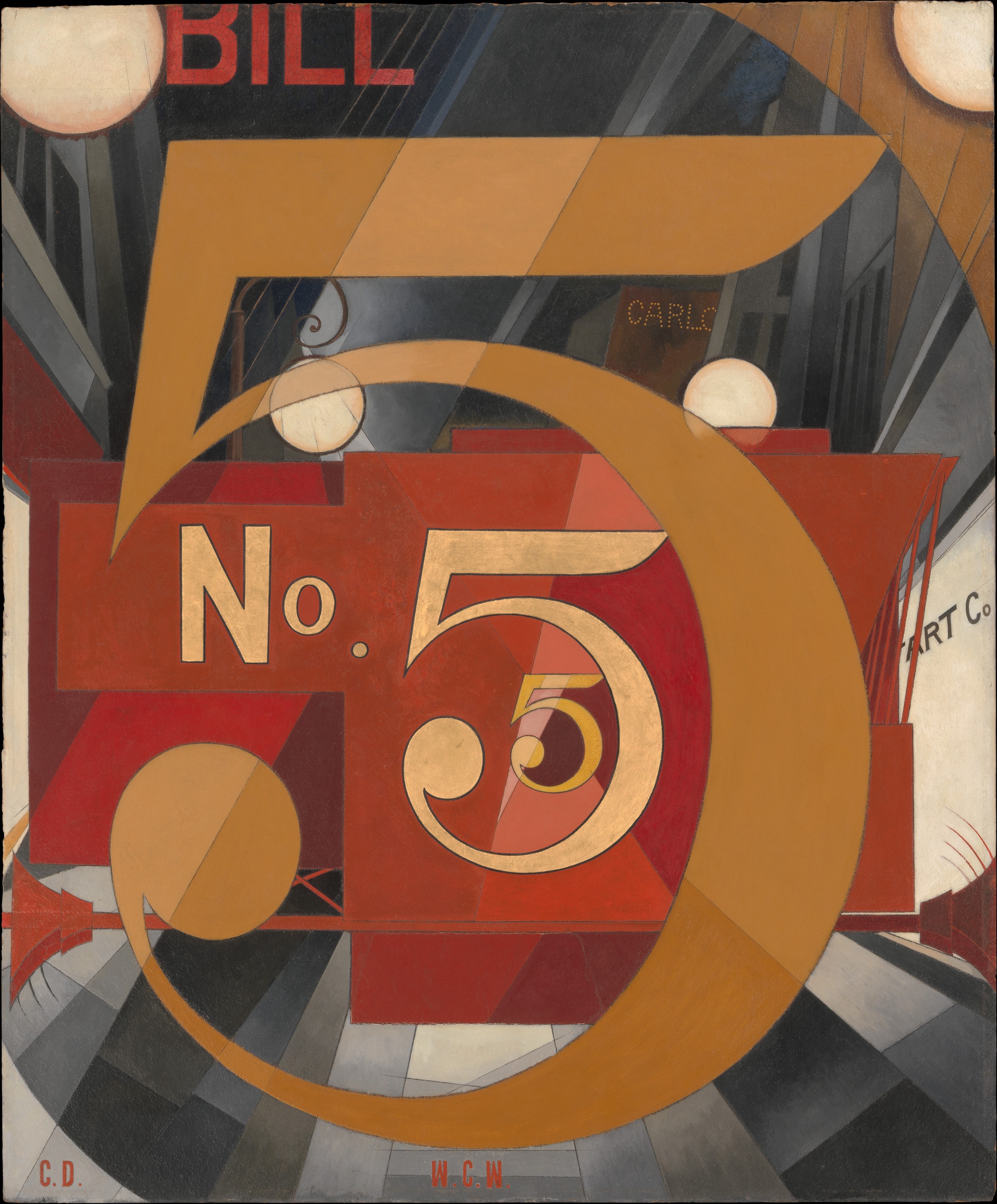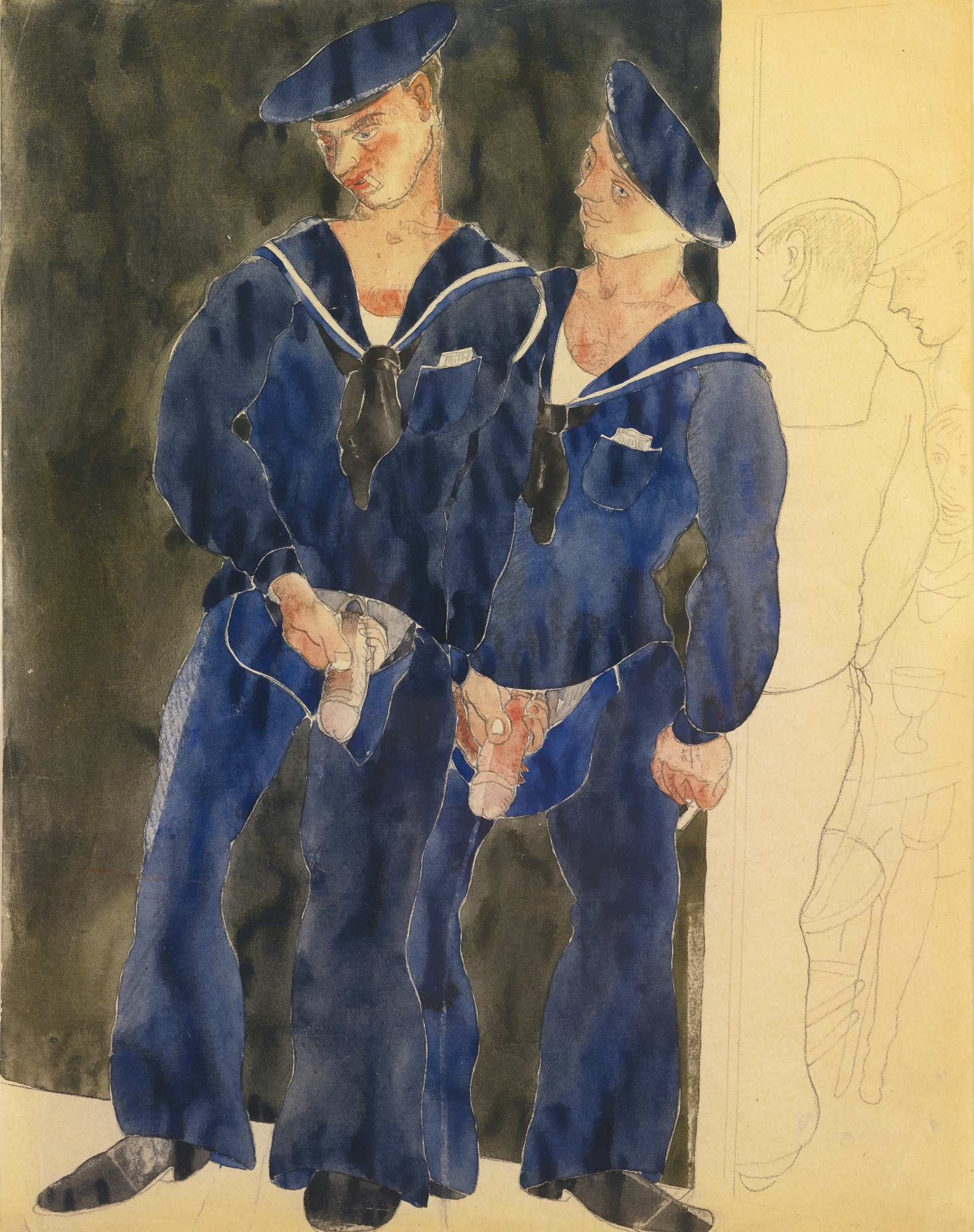Without its backstory this painting likely doesn't make much sense. However, knowing that it is a tribute to the artist's friend, poet William Carlos Williams, and is inspired by his poem "The Great Figure", gives meaning to its stylized and abstract images. The title of the painting is derived from Williams' one sentence poem which evokes the sights and sounds of a red fire truck emblazoned with a gold number five speeding down a city street at night. Rather than depicting that exact scene, Demuth captures the urgency of the moment through use of diagonal lines that force the viewer's eyes around the painting and by repeating and successively enlarging the gold fives which dominate the composition. Red planes represent the fire truck with its ladder on the right and blaring horns extending from the axle. Gray and black buildings and sidewalks along with spherical streetlamps and lit storefronts make up the backdrop of this city scene.
Painted like an advertising billboard, this is one of eight abstract "poster portraits" that Demuth executed between 1924 and 1929 in homage to his friends who were artists, writers, and stage performers. Instead of a traditional portrait likeness of Williams, this painting contains numerous references to him: his initials W.C.W. at the bottom, his nickname Bill cropped at the top, and his middle name Carlos (minus the s) displayed in yellow lights.
Although this painting may be widely recognized, the artist's name is probably not. Charles Demuth lived in rural Pennsylvania where he worked in his home in a small studio overlooking his garden. Like fellow American modernist painter Charles Sheeler, Demuth was a Precisionist influenced by the European movements of cubism with its fractured planes and prisms and futurism which embraced the vitality and dynamism of the machine age. He produced over a thousand works of art by the time he died at age 51.
- Martina
We’ve got a small favour to ask. If you read our stories, like us and wish to help us, we would be able to grow and share art in more and more places. If you would like to support our work you can do it here :)


 Charles Demuth
Charles Demuth